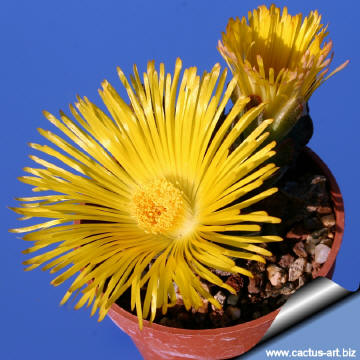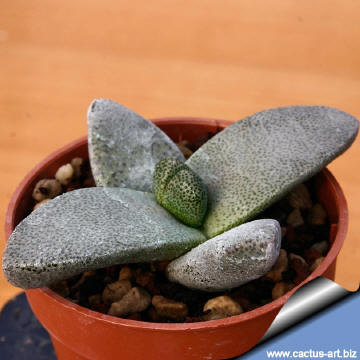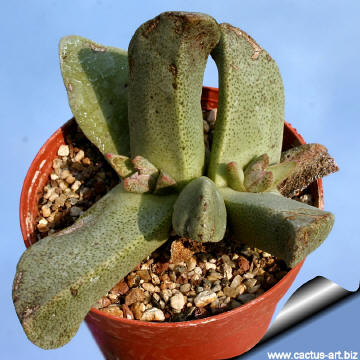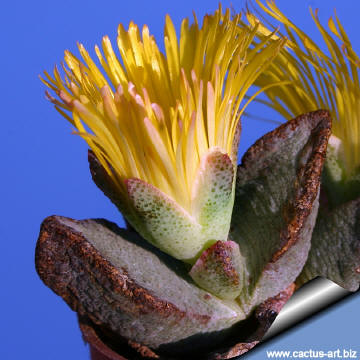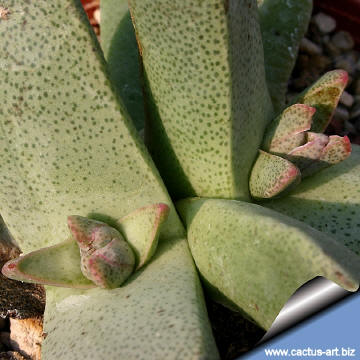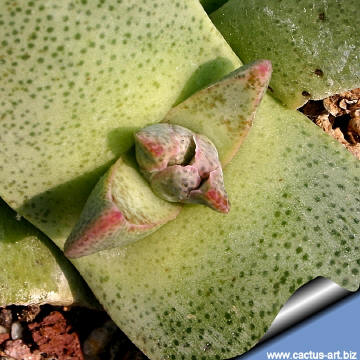-
x
Description
This is s a mimicry plant know as "African living rock" or “Splits rock” because it imitates split chunks of granite (especially if grown in full blazing sun) It resemble stones so closely that it can only be found with difficulty. Family: Mesebrianthemaceae (Aizoaceae) Origin: South Africa (Cape Province: Aberdeen) Habitat: Grows in rock crevices in areas with about 300 mm rainfall per annum in March and November where light is usually bright and unpolluted. Vernacular Names: Split Rock Plant, Liver plant, Stone plant. Etymology: The genus name is derived from the greek words pleios (full) and spilos (dots), which refers to the many dots on the plants. Taxonomic Synonyms:
| |
| Description: Pleiospilos simulans is a slowly clump-forming succulent and one of the more unusual Pleiospilos species. One of the largest of the species suited for hot sunny positions. | |
| Cultivation: Pleiospilos nelii is a very adaptable plant, it will grow whenever it has water and good sunlight, but it will become dormant in very hot weather to conserve water. It need full sun to light shade with a very open compost that drains quickly. The container should be at least 10 cm deep to accommodate the long tap root. Very little water is needed during the growing season, and we do not fertilize the plants. In late summer to early fall before nighttime temperatures fall, watering of the plants is stepped up to once a week. When the nighttime temperatures drop to 9°C, watering is restricted throughout the winter months. In the winter, it grows new leaves from the center of the split, and the new leaves then consume the old leaves. If the plant is over watered, the old leaves remain and the plant usually rots and dies. Not to water it when it is splitting, just leave it alone. Even with no watering the leaves don't shrink and prune up like some succulents do when they are not watered they stays plump even after several months with no water. For an idea of how succulent these plants are, a mature specimen can easily go a whole year without any water in a typical European or North American climate. If the plants are grown correctly, ideally there should only ever be 2 pairs of leaves. The lower ones are the previous years, and the top ones, the current years. One sign of good care is a firm, round, symmetrical plant with no old leaves still attached at the end of summer. The plants are hardy down to -5°C.
| |

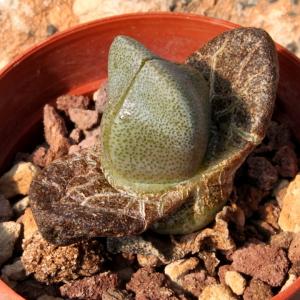
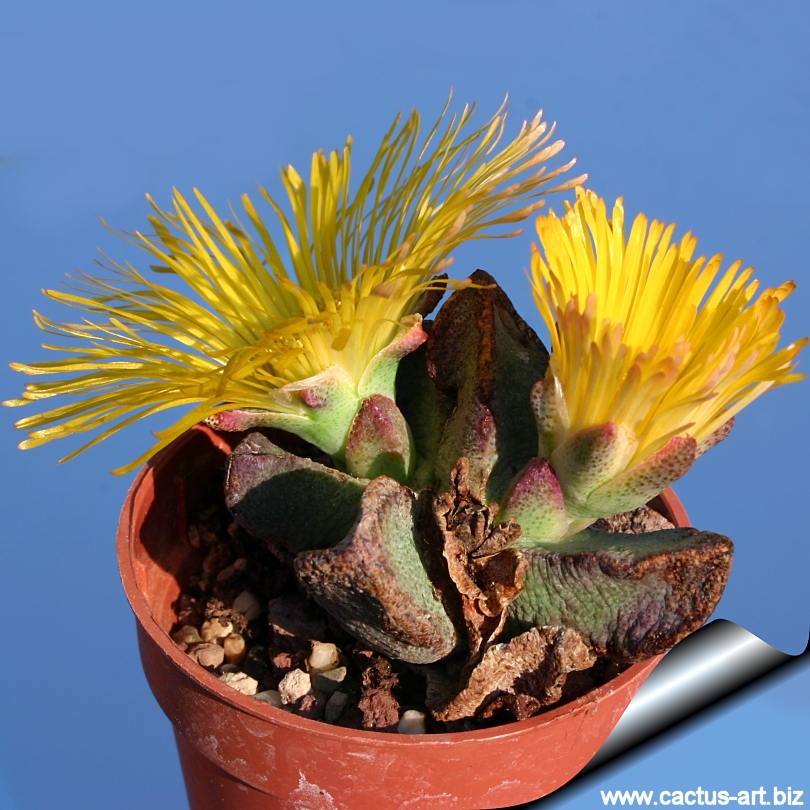 Pleiospilos simulans is a mimicry plant know as "African living rock" or “Splits rock” because it imitates split chunks of granite (especially if grown in full blazing sun and in time of drought) It resemble stones so
Pleiospilos simulans is a mimicry plant know as "African living rock" or “Splits rock” because it imitates split chunks of granite (especially if grown in full blazing sun and in time of drought) It resemble stones so 